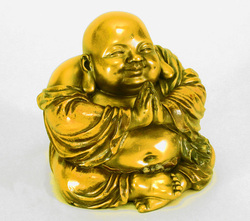
Specifically, Mazu introduced a radicalized approach of collapsing substance and function, as well as principle and phenomena, into a complete overlap.

Although it was Huineng who represented an important turn in the development of Chan with his iconoclastic approach to enlightenment as sudden rather than gradual, it was in Huineng’s successor, Mazu, where we saw its complete radicalization. ( shrink)Ĭhan Buddhism as we know it today can perhaps be traceable to what is known as the Hongzhou school, founded by Mazu Daoyi.

The repeatability and apparent reliability of these first-person methods opens up a class of awakening experience to empirical investigation and has the potential to provide new insights into nondual traditions. I will endeavour to show that these methods, although radically different from traditional meditation techniques, result in an experience with striking similarities to Zen accounts of awakening, in particular, as experiencing oneself as empty or void and yet totally united with the given world.
#Zen meaning chinese series
I will guide the reader through a series of Harding’s first-person experiments which investigate the gap where you cannot see your own head. These references bear a remarkable resemblance to an approach to awakening developed by Douglas Harding. ) and tongue, and seeing your ‘Original Face’. In the early Zen tradition, there are many references to awakening as chopping off your head, not having eyes, nose (. In particular, the two aspects of awakening are: (1) seeing that the nature of one’s self or mind is empty or void and (2) an erasing of the usual (though merely apparent) boundary between subject and object. In this tradition, to awaken is to ‘see your true nature’. In this paper, I investigate the phenomenology of awakening in Chinese Zen Buddhism. This is the first step in a phenomenology of religions that is inclusive, diverse, relevant and grounded in the world we live in.

- He allows us to see alternative ways of interpreting religious texts through approaches that look beyond reading a text for the improvement of our own religion or for access to some metaphysically transcendent reality. He considers the purpose of interreligious dialogue and the provocative kind of questions that seem to purposefully decenter us, drawing on methods from confessionally-oriented hermeneutics and skills from critical thinking. ) the level of story - the god depicted in the Jewish Bible, the master Mazu in his recorded sayings literature, and Jesus as he is depicted in canonized Christian Gospels - Nathan Eric Dickman meditates on human responses to divine questions. But what are we to understand when Jesus asks “Who do you say that I am?”, or Mazu, the Classical Zen master asks, “Why do you seek outside?" Is their questioning a power or weakness? Is it something human beings are only capable of due to our finitude? Is there any kind of question that is a power? -/- Focusing on three case studies of questions in divine discourse on (. Buddhas, gods, prophets and oracles are often depicted as asking questions.


 0 kommentar(er)
0 kommentar(er)
